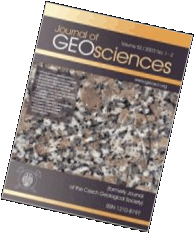 Export to Mendeley
Export to MendeleyOriginal Paper
The coal deposits in the contact area between Bohemian Massif and outer Carpathians
Journal of the Czech Geological Society, volume 38 (1993), issue 1-2, 35 - 42
In the Moravian and Silesian area, the external coal-bearing molasse zone of the Variscan Orogen is partly overlain by the sediments of an Alpine coal-bearing molasse zone. Namurian A - Westphalian coal-bearing molasse sedi¬ments in the Ostrava-Karvind Coalfield show a distinct E-W lithological and structural zonation conditioned by the development in two contrasting tectonic units - narrow western mobile Variscan foredeep and the extensive eastern platform. Coal seams are formed mainly by bituminous coal of a high quality. Most of the coals can be used for coke production. The variegated barren rocks - red beds, occur within different stratigraphic levels. The red beds are of postdepositional origin and represent relicts of the Jurassic and Cretaceous weathering zone. The structure of the Carboniferous strata was influenced by Alpine movements. The coal-bearing Namurian A near N6m6i6ky in South Moravia indicates that the Variscan foredeep sediments were much more extensive and extended to the southwest. The South Moravian Lignite Coalfield originated in the Vienna Basin during the Pannonian and Pontian. It com¬prises two main seams - Kyjov seam and Dubfiany seam, all mined in separated areas. The flat lying coal strata are normall faulted forming a system of grabens and horsts. The seams are formed by xylodetrital and detrital humite brown coals with high ash content.
Webdesign inspired by aTeo. Hosted at the server of the Institute of Petrology and Structural Geology, Charles University, Prague.
ISSN: 1803-1943 (online), 1802-6222 (print)
email: jgeosci(at)jgeosci.org


IF (WoS, 2023): 1.1
5 YEAR IF (WoS, 2023): 1.5
Policy: Open Access
ISSN: 1802-6222
E-ISSN: 1803-1943